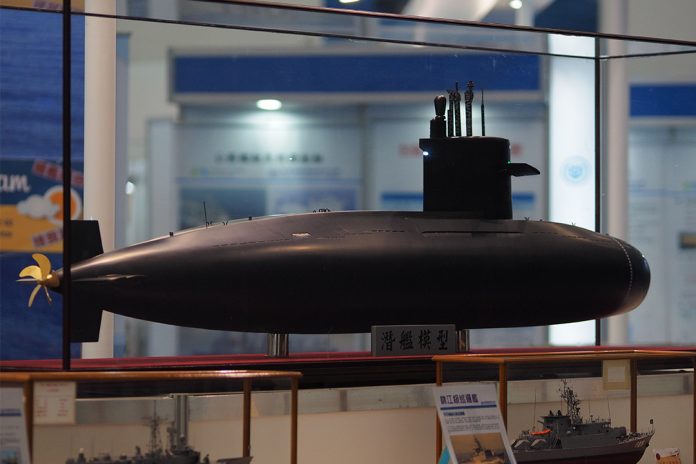Taiwan has formally started construction of the first indigenous diesel-electric submarine (SSK) for the Republic of China Navy (RoCN) following a launch ceremony at CSBC Corporation’s purpose-built submarine construction facility in Kaohsiung on 24 November.
Taiwanese President Tsai Ing-wen noted at the ceremony that the event marked a key milestone for domestic defence industry and demonstrated the island’s strong will to protect its sovereignty.
CSBC Corporation is partnering with the state-owned National Chung-Shan Institute of Science and Technology (NCSIST) to construct eight SSKs worth up to US$16 billion under the Indigenous Defence Submarine/ Hai Chang project.
The company stated that the first boat is expected to be completed in the third quarter of 2024, followed by sea trials and commissioning in 2025.
The SSK is expected to have an overall length of 70 m and will displace about 2,500 tonnes when submerged. Although detailed performance specifications remain unconfirmed, the RoCN is reportedly expecting an operational range of up to 6,000 nautical miles as well as surface and submerged speeds of around 8 kt and 17 kt, respectively.
It is also expected to be armed with US-made Mk 48 Mod 6 Advanced Technology heavyweight torpedoes and UGM-84L Harpoon Block II missiles, with combat management and sonar systems supplied by US companies such as Lockheed Martin and Raytheon.
The RoCN’s operates what is widely considered to be an obsolete submarine force comprising two refurbished Dutch-built Zwaardvis/Hai Lung (Sea Dragon)-class SSKs subs acquired in the late 1980s. It also maintains two Second World War-vintage former US Navy Guppy II/Hai Shih (Sea Lion)-class boats, which are essentially the oldest submarines in service today.
Taiwan’s bid to enhance its submarine force via the US can be traced as far as 2001, when the government of the day released a wide-ranging arms package which included up to eight SSKs. However, these promised boats never materialised owing to a multitude of challenges, including political considerations and affordability.
by Jr Ng













